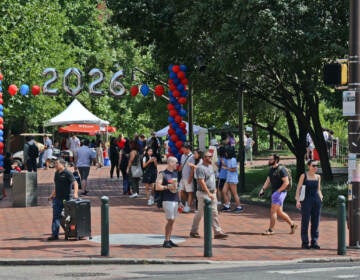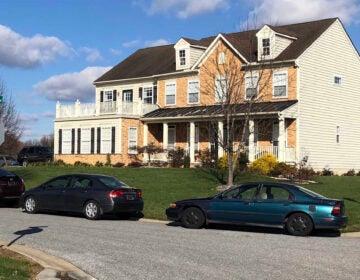The comfort of touch, and the clergy’s new challenge to minister without it
Religious leaders have become accustomed to hugging and holding hands to comfort congregants. But during social distancing, they must find other ways to console.
Listen 4:45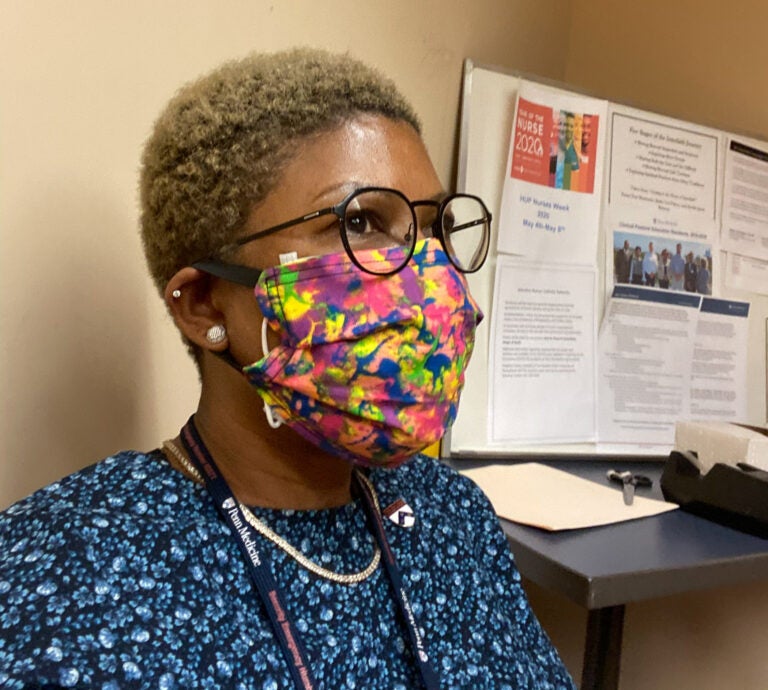
Since the COVID-19 pandemic began, Penn Medicine Chaplain Camille Turner has to call her patients to provide comfort, rather than meeting them at their bedsides. (Provided by Camille Turner)
Are you on the front lines of the coronavirus? Help us report on the pandemic.
Michael Beals said he feels “emotionally mute.”
The Wilmington rabbi’s work often revolves around the notion that 80% of communication is nonverbal — expressing emotion through a hug, a touch on the shoulder, or holding a hand to comfort someone during difficult times.
But COVID-19 has forced Beals into his home office, where he can’t help vocalize feelings with body language. The self-acclaimed “hugmeister” said with the lack of physical interaction, he feels he’s not reaching his full potential.
“I feel like I’ve had my wings clipped,” said Beals, of Congregation Beth Shalom, who now leads religious services and adult education programs virtually.
“I don’t want to put my needs above the needs of the health concerns, my congregants, and the health professionals. I’m a bit of a Luddite, so technology makes me a bit anxious, but I’m trying to fight my own fears because Zoom is the most useful way of helping my congregants. But it doesn’t quite make up for what I could do in terms of my pastoral care, as I was able to do in my face-to-face visits.”
Since social distancing measures were established to prevent the spread of the coronavirus, religious leaders of all denominations have grappled with the concept of providing comfort, peace, and spiritual healing from at least six feet away.
“It is part of the very fabric and DNA of what it means to be a minister, to fellowship with, to touch, to comfort, to be the hands and feet of Jesus here on earth. So coronavirus has completely augmented the way we do touch and feelings and how it is we comfort people,” said Pastor Keon Gerow of Catalyst Church in Philadelphia.
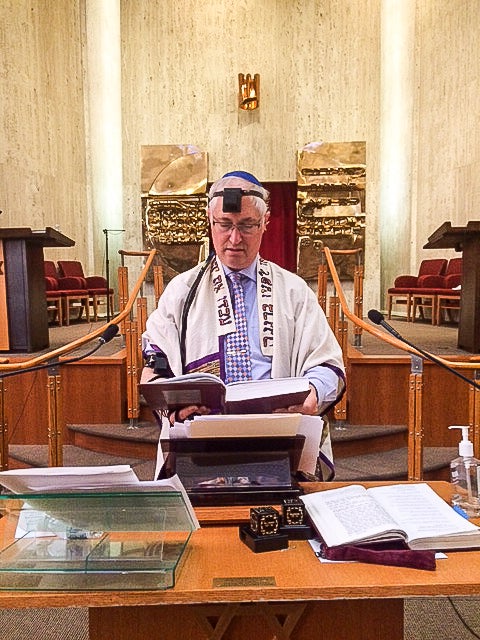
A human need
Physical touch is a critical component of worship leaders’ work — from consoling grievers at funerals with a hug, to holding a patient’s hand at a bedside, to a joyful greeting at a weekly service. Physical contact helps religious leaders connect emotionally and spiritually, believing human interaction is their calling.
In Christianity, physical touch symbolizes the work of Jesus. The Bible tells stories about Jesus touching and accepting those cast out of society, and about Jesus healing people simply by touching them.
“Every shepherd should smell like his or her sheep, because she or he is touching them,” Gerow said. “And no matter if you are the president or a pauper, a billionaire or a prostitute, Jesus is replete, and the New Testament was getting down to where people are and not being afraid to touch them.”
Several psychologists have researched the mental health benefits of touch. Researchers have found that babies who aren’t held enough don’t develop fully. One of those researchers, Tiffany Field of the Touch Research Institute in Miami, also contends individuals can alleviate depression by receiving a massage from a loved one. Other studies find students who receive an encouraging touch on the arm or back are more likely to succeed.
It’s a human need, said Rev. Jason Churchill of St. Stephen’s Lutheran Church in Wilmington.
“For many folks, it’s a feeling of comfort and reassurance,” he said. “It’s a way for people to acknowledge one another in a more personal way.”
For some, a hug at their weekly religious service might be the only physical interaction they experience all week. Thinking of those who live alone is “heartbreaking,” Churchill said.
A 6-foot grave’s symbolism: social distancing and funerals
Religious leaders say one of the most devastating effects of COVID-19 and social distancing is watching congregants grieve a loved one’s death without the comfort of physical touch.
Attendants of funeral services must maintain a 6-foot distance. It comes as a shock to religious leaders who prior to COVID-19 hugged or shook hands with mourners throughout the service.
“I just did a graveside service last week, and it was a struggle to stand on one end of the casket and not be able to go to the other end and hug and console the mourners,” Churchill said. “The irony of the distance being created by a 6-foot grave in front of me, that didn’t escape me at all. The symbolism of that was playing in my mind the entire time.”
The cold atmosphere is made worse by the requirement to wear masks and gloves.
“Sometimes we use facial expressions to make up for what we can’t do physically, but now you’re cutting my expression off from the bottom of my nose to my chin, so all I’ve got are my eyes, and I’m doing everything I can with my eyes,” Beals said. “When I’m wearing the mask, and I have my glasses on and I’m trying to do the Hebrew, it ends up steaming up my glasses, so I’m a mess!”
To compromise, the rabbi uses his tone of voice to express comfort and love — and names what he can’t do.
“If I say, ‘This feels awful, you know I want to hug you more than anything.’ I name what I can’t do rather than ignoring it. So we’re all validating the same feelings,” Beals said.
Funeral homes also limit attendance to 10 people, which means many family members are forced to watch over Zoom. For the Black church, funerals — or “homegoing services” — are family reunions. So COVID-19 has altered African American culture, Gerow said.
“Being able to bond with many people you haven’t seen in years, to catch up on people’s lives and engage with individuals you were distant from for quite some time. So that really happens at the repast after the funeral, and that’s not able to happen at all,” he said.
Zoom is a compromise for honoring some religious traditions, Beals said — such as the Mourner’s Kaddish, a Jewish prayer in memory of the dead requiring a quorum of 10. If there’s a time lag, a jumble of sounds resonate from the computers. Beals calls it a “Cacophony Kedusha” — a Holy Cacophony.
“Mourners need to be able to be heard saying the Kaddish, even if it sounds out of sync,” he said. “I think it’s very validating, as a mourner, to know your recitation of Kaddish is being heard. I know this from first-hand experience as I have been saying Kaddish for the past 11 months for my dad — my last day was this Monday. And knowing I was being heard helped me feel I was doing right by my dad.”
Not all Jewish movements agree, however. When Beals’ 91-year old-cousin died from COVID-19 in Leeds, England, his Orthodox rabbi would not allow Mourner’s Kaddish over Zoom, believing it only counts if it’s performed in person.
Gerow conducted a funeral over Zoom because the family wanted to take precautions after some members tested positive for COVID-19. He said when he hung up, a tear came to his eye because the family wasn’t able to grieve in the way they deserved.
Rev. Mark Tyler, pastor of Mother Bethel AME Church in Philadelphia, said he believes the way COVID-19 has changed the grieving process will have lasting effects.
“It is really the part of all of this that people will deal with for years to come, feeling they were never able to give their loved one a quote-un-quote proper homegoing or sending off,” Tyler said.
‘Did I really provide care?’ Questioning the alternatives to touch
Physical touch is an integral part of the care chaplains usually provide patients and their loved ones, said Camille Turner, who ministers at Pennsylvania Hospital and the Hospital of the University of Pennsylvania.
“I think that’s the power of the work we do as chaplains,” she said. “Showing up, and physical touch is a visual reminder and physical reminder we are not alone in this process, that death doesn’t have to be terrifying.”
Turner said a sense of uneasiness overcame her the first day she realized her line of work would be forever changed, after visiting a dying patient and the family to offer the Irish blessing.
“I knew we were at the beginning of this COVID, so there were certain things in my mind, ‘You can’t do this, you can’t do that,’ and I got into the room, we said the prayer, and the family broke down — and instinctively we hugged,” she said.
“Once I walked out of the room after giving a hug, the whole medical staff turned around and looked at me. Once I got down to the office to do notes, I was like, ‘Oh, that’s why they were looking at me,’ that I provided some level of physical comfort and touch. Immediately, I started to feel this anxiousness and concern, not that I somehow contracted COVID, because the reality is my immune system might be strong enough, but I may have compromised the immune system of a family member.”
When social distancing began, Turner came to the realization there is no substitute for touch, even though technology is a beneficial resource. No longer able to visit hospital rooms, she calls patients on the phone, listening more intently than ever before. Since patients and their families also are separated, Turner’s help is needed more than ever.
“Our fundamental objective of caring for others has shifted and brought a level of anxiety for us: ‘Did I really provide care?’” she said. “In the past, it was like, ‘Did the prayer resonate?’ If we brought flowers, ‘Did that create comfort?’ Now we’re saying, ‘Was the telephone connection clear enough?’ And, ‘Did the patient or family member actually hear clearly what we were saying?’”
Religious leaders say they and their volunteers have been on the phone more since the statewide lockdowns than ever before, ensuring that all congregants receive calls every week to make sure they feel cared for and comforted during difficult times. They say they want this new tradition to continue post-coronavirus.
“It also feels like this is the closest we’ve been in a long time. We set up a phone tree where we’re trying to make sure everyone is touched, and make sure no one is falling through the cracks,” Tyler said. “We gotta find ways where people can physically see us (on video), and hear our voice and know they’re not alone.”
Finding blessings amid COVID-19
But there is a blessing evolving from the pandemic, Gerow said: the ability to spend more time with loved ones. He wants his congregation to open their eyes to some good in a bad situation.
“We are not stuck in the house; we are safe in the house. This is an opportunity: The far majority of Americans have finally had to be still, and be at rest, and be at peace. Look at the opportunity that coronavirus has given us to re-establish relationships with loved ones, and family and friends,” Gerow said.
“These drive-by ‘Hi’s and Byes,’ checkups, updates, and ‘How was your day?’ as we were getting prepared to go to work in the morning, and not spending the significant time we need with our loved ones, wives and husbands and even our children. Look at the opportunity this has provided for us to have a home-cooked meal where everyone is able to sit down, not just on Sunday evening, but every single day, and talk and communicate and catch up on each other’s lives.”
Religious leaders across the country also are seeing the silver lining that they’re able to reach a much wider audience by conducting services on Zoom.
Tyler’s virtual Easter Sunday service had more than 23,000 views, and attendance of regular Sunday services increased from the hundreds to the thousands. His weekday Bible studies might even remain distance-learning because not having a commute attracts more participants.
“We will probably come out as a hybrid congregation where it’s a lot of the old school, but embracing fully the new school as well,” Tyler said.
Religious leaders are figuring out best practices for reopening places of worship once stay-at-home orders are lifted, including thinking about people wanting to shake hands or hug once they see one another again.
Churchill, of St. Stephen’s Lutheran Church, said there are many safety measures to consider, such as seating the choir separately, or altering communion so congregants can dip bread into their own cups rather than sharing one.
Social distancing also has inspired him to think more about violation of personal space. Churchill has talked to his child congregants about asking permission to hug, but coronavirus has moved him to have similar discussions with adults.
“There’s the sacredness of touch, but that’s been violated, and I think the church is one of the guiltiest places for the violation of touch,” he said. “What we need to learn is you do need consent, and you do need to own your own agency and say no. While I don’t have any folks that have come to me with issues, I know folks in my congregation who are products of clergy abuse. So touch is different for them. And I think we need to be more honest and open and talk about this.”
Gerow said he wants to create mental health and economic ministries to help people overcome the behavioral health and financial troubles brought on by the pandemic. And he wants communities to learn how to be more compassionate and show an interest in others’ well-being in a way that “pre-corona, people had taken for granted.”
“Whether you’re a millionaire or a poor man, whether you live on the Main Line or no line, whether you have a Ph.D. or GED, whether you’re a celebrity or just a regular person, this virus is, has, and will be affecting all of us for quite some time,” Gerow said. “This has brought the nation to our knees.”
WHYY is your source for fact-based, in-depth journalism and information. As a nonprofit organization, we rely on financial support from readers like you. Please give today.




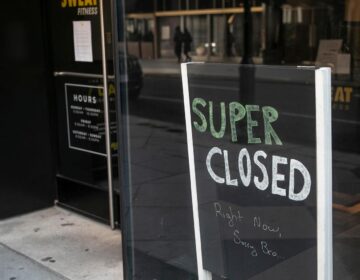
![CoronavirusPandemic_1024x512[1]](https://whyy.org/wp-content/uploads/2020/03/CoronavirusPandemic_1024x5121-300x150.jpg)

